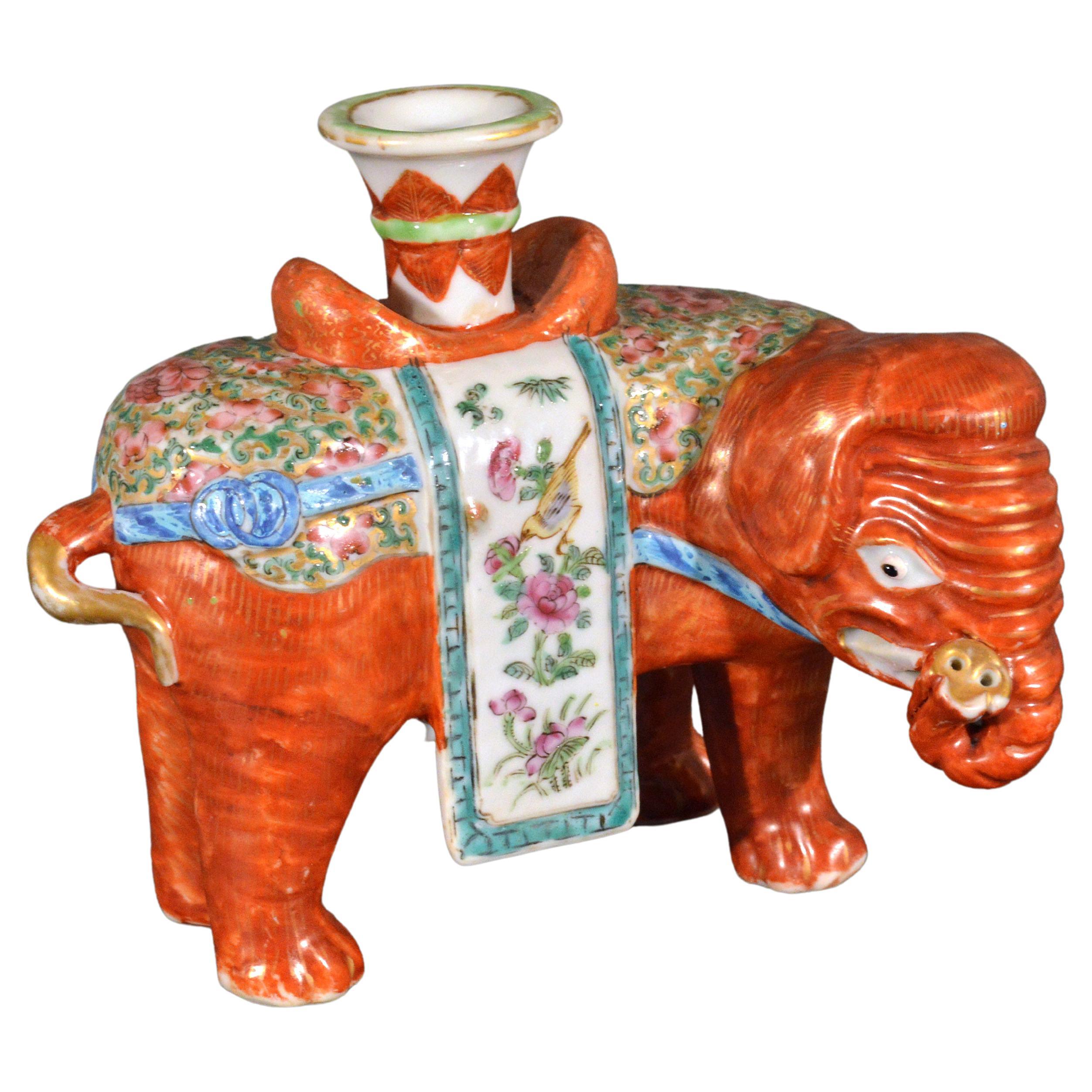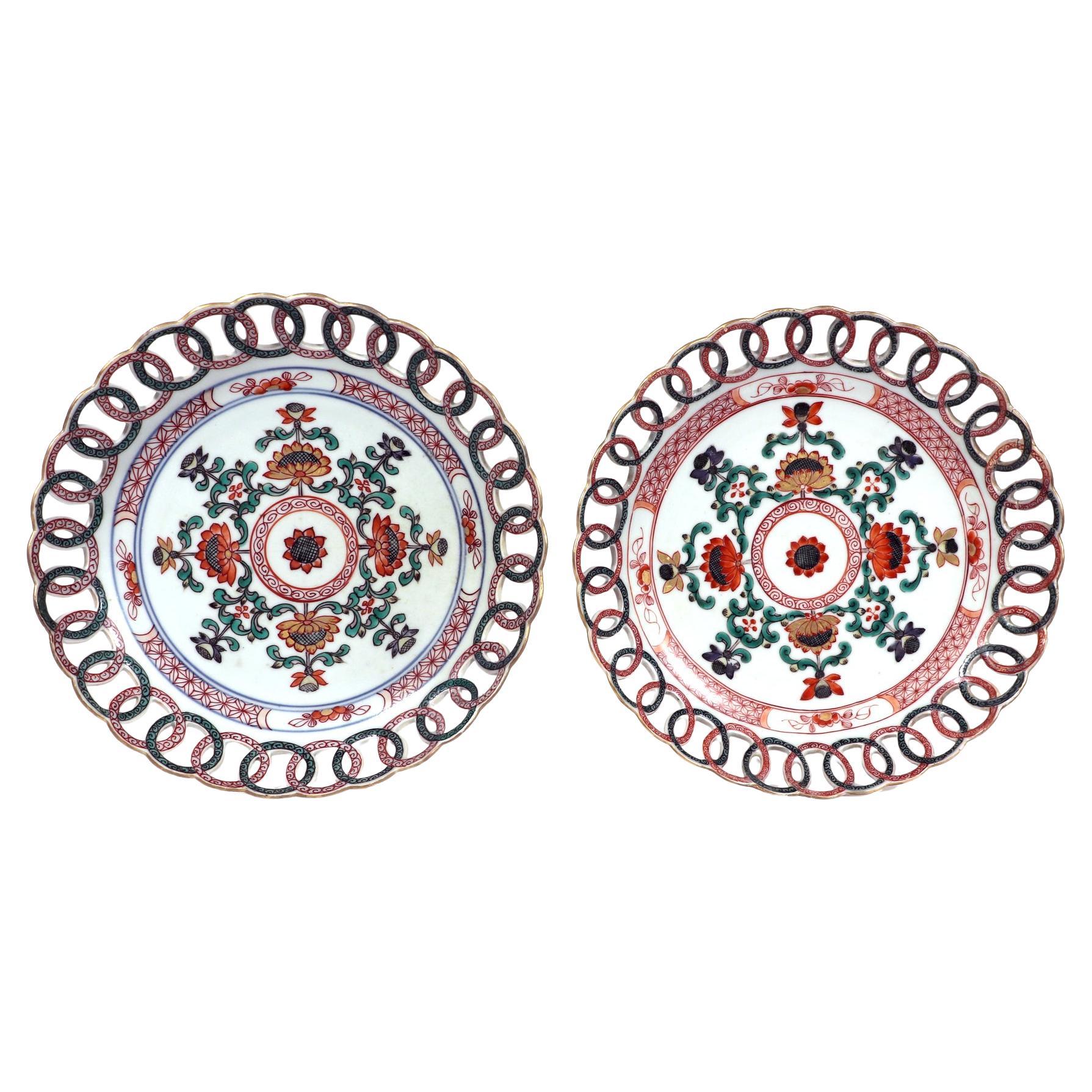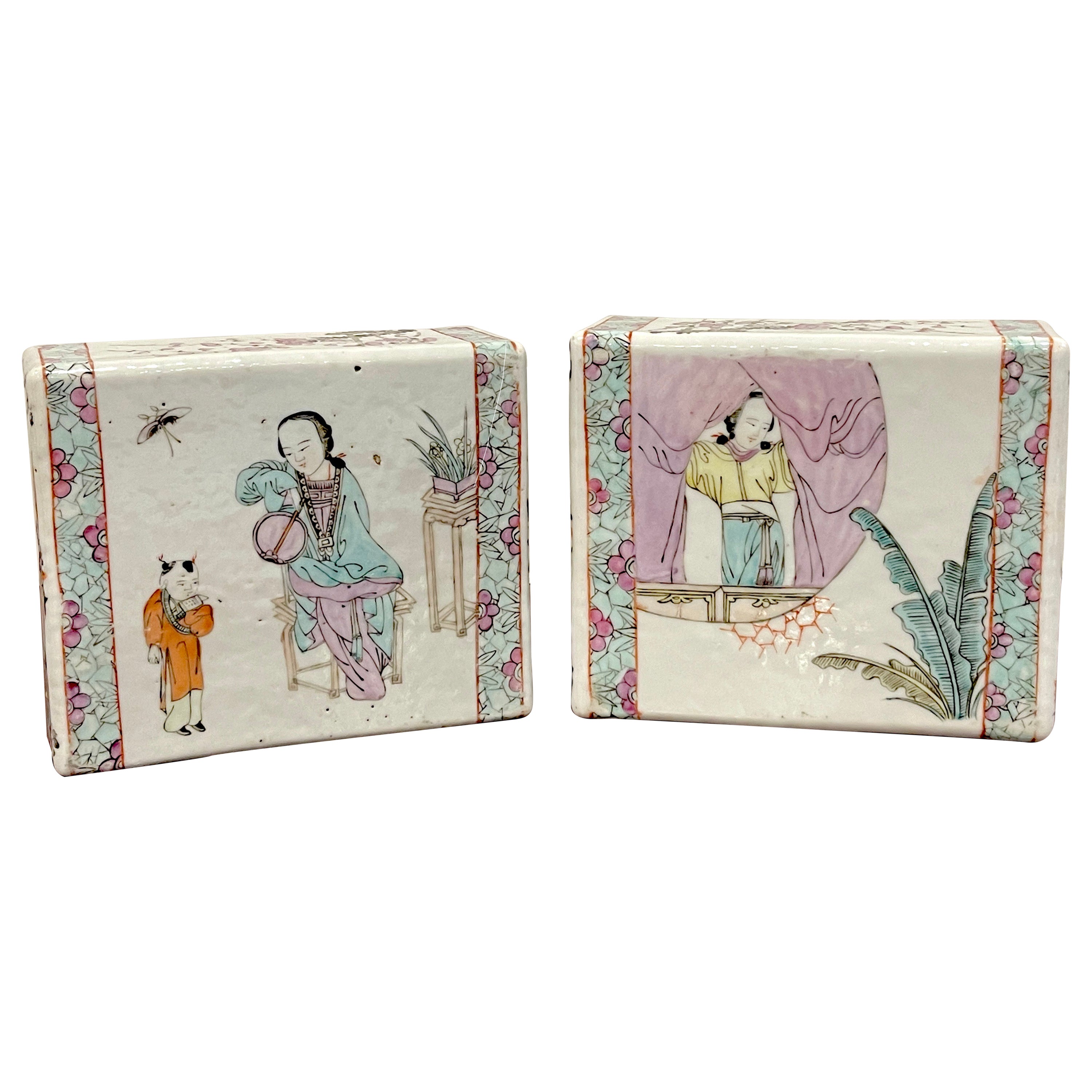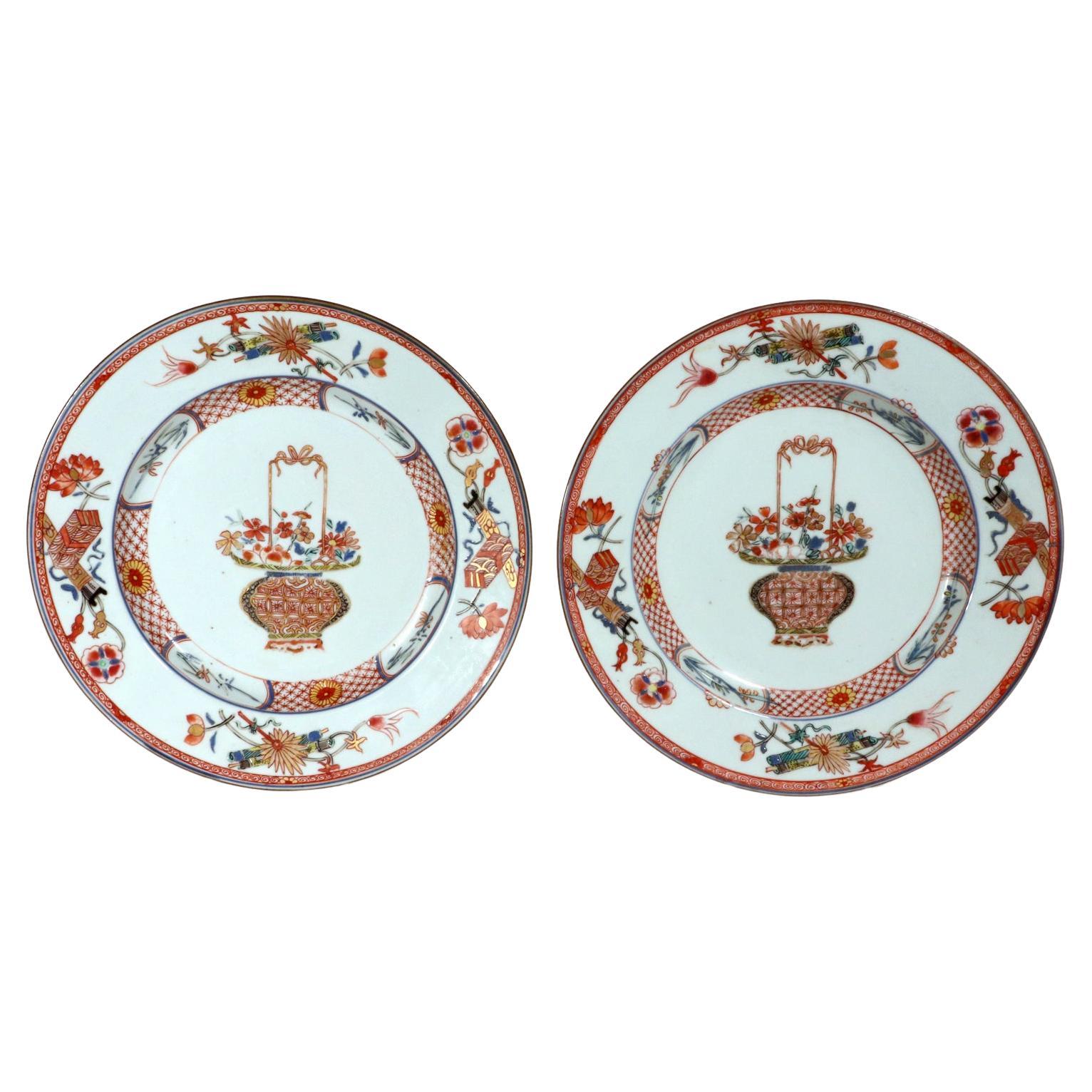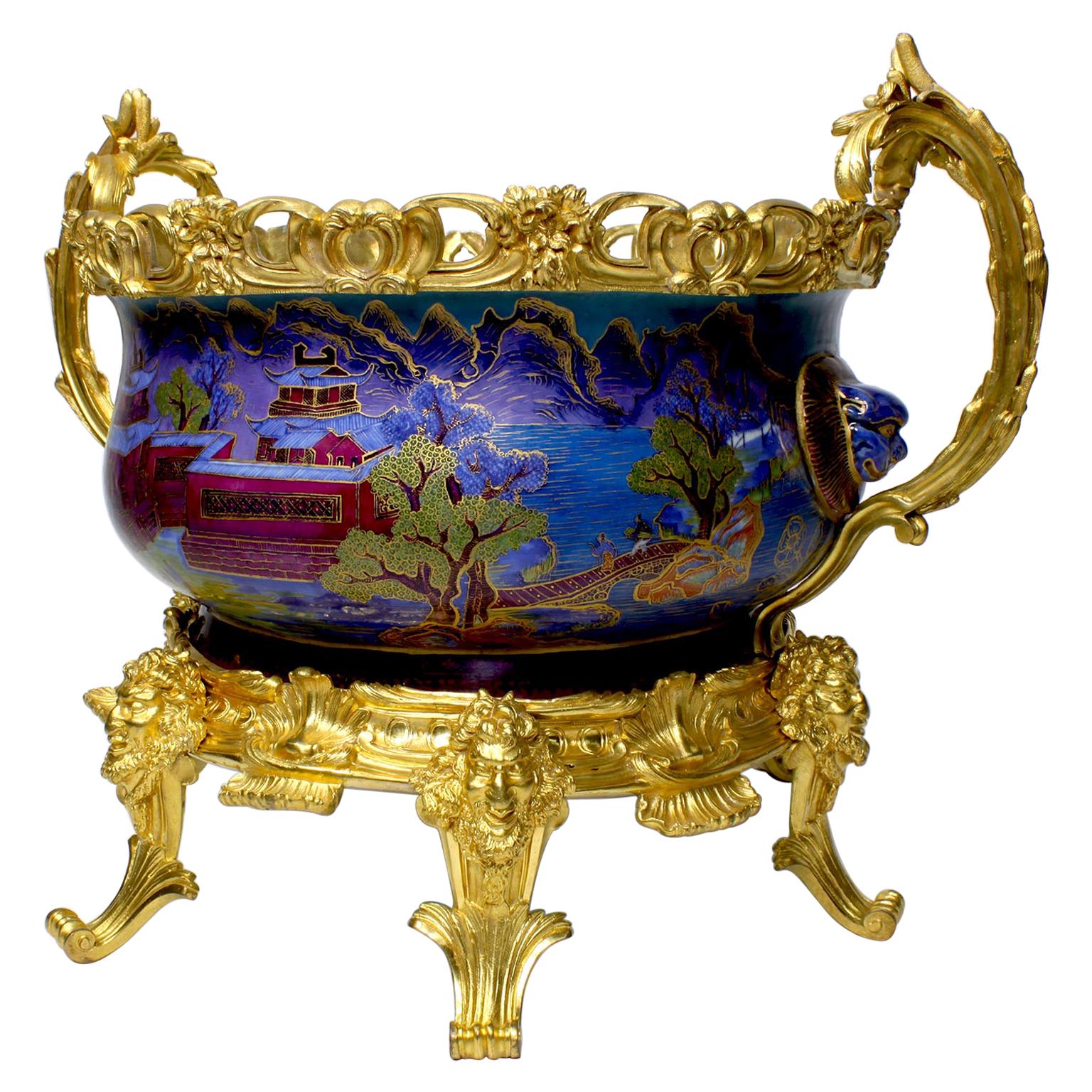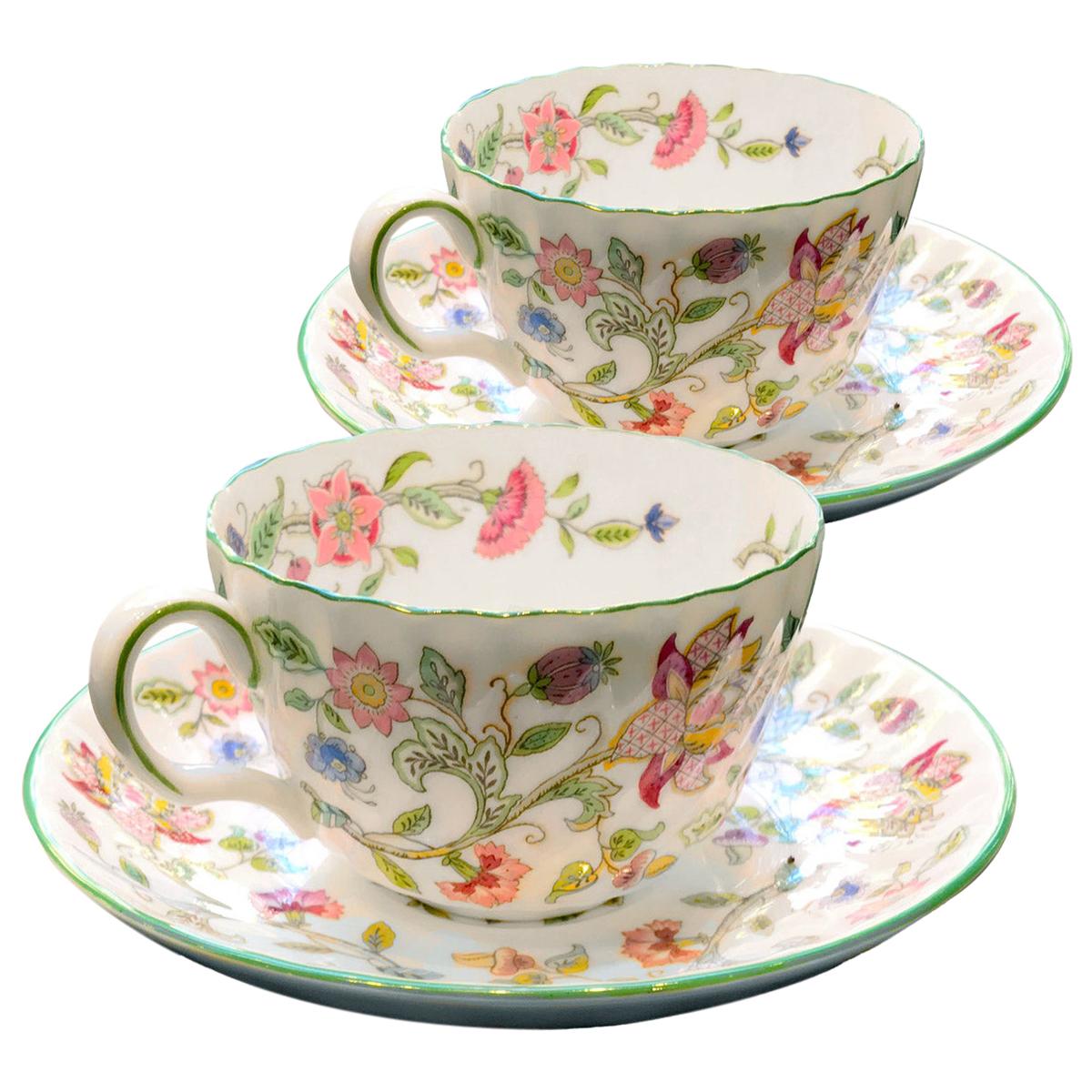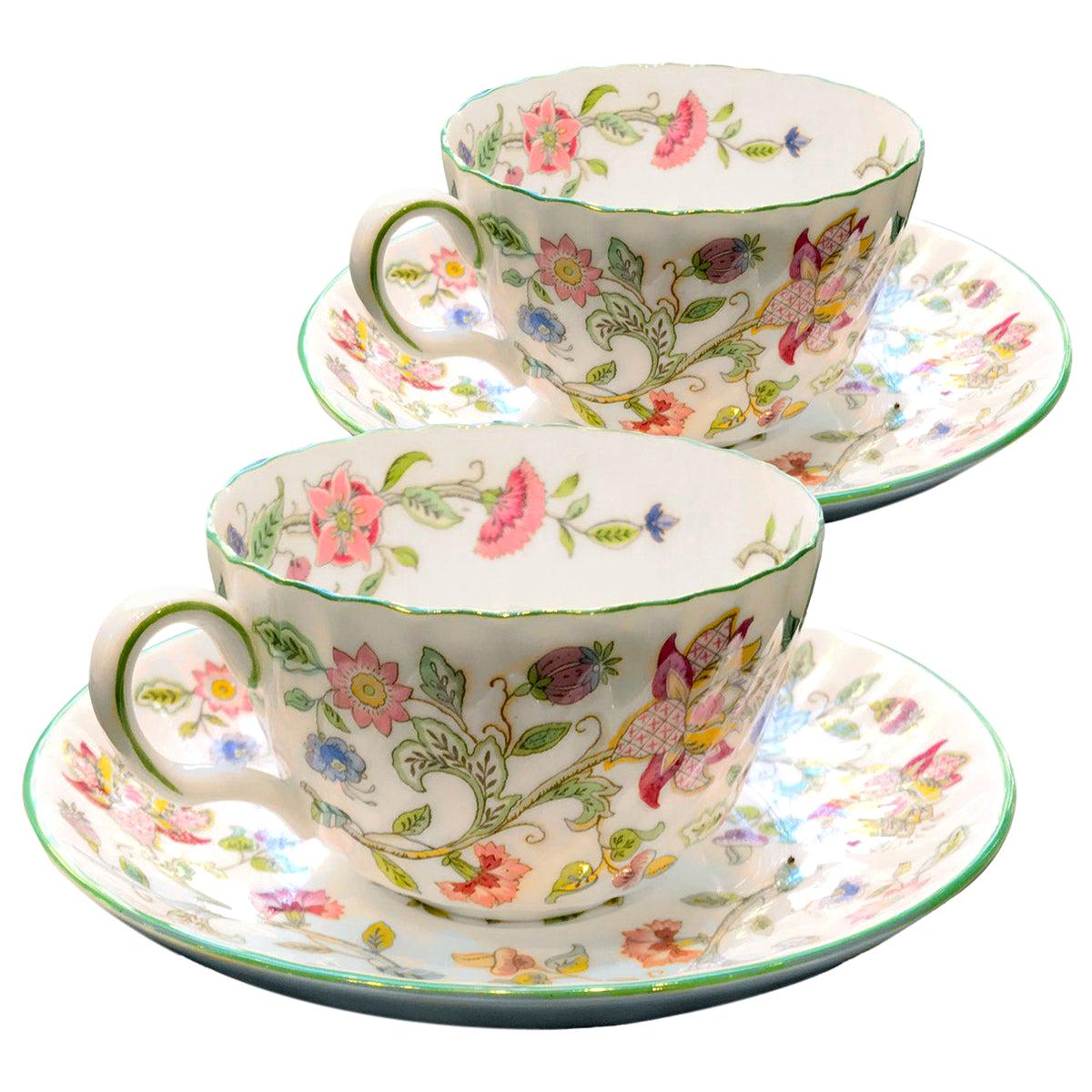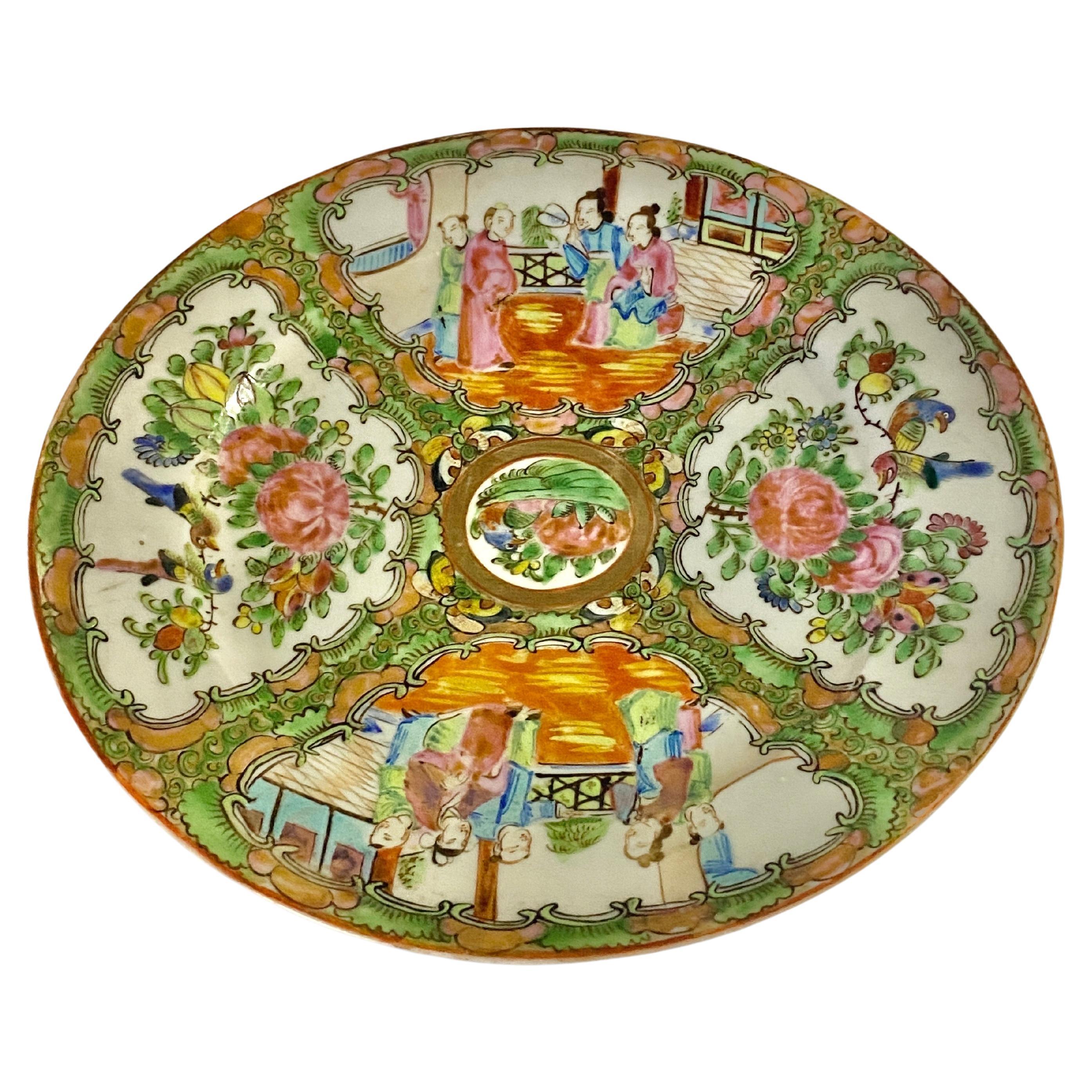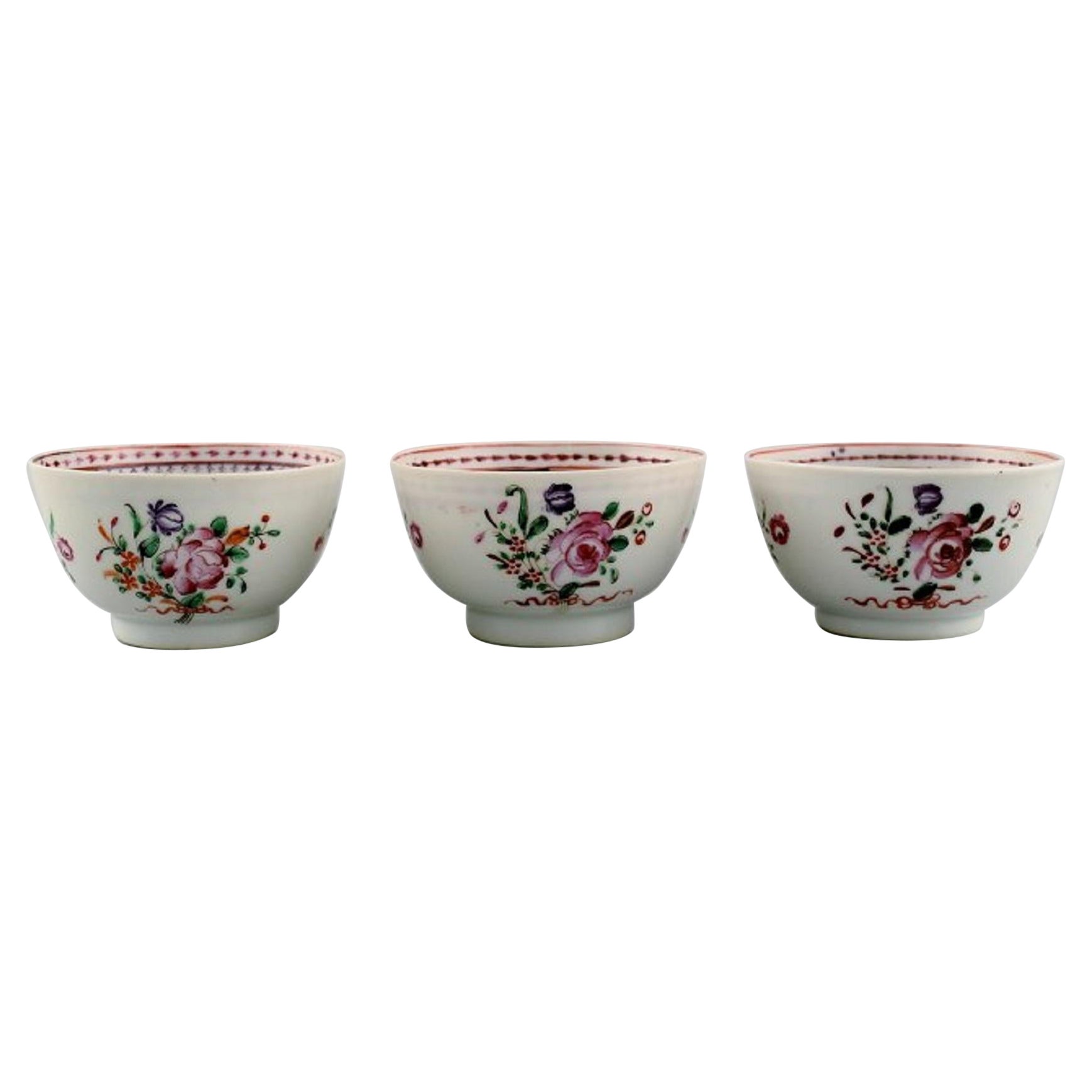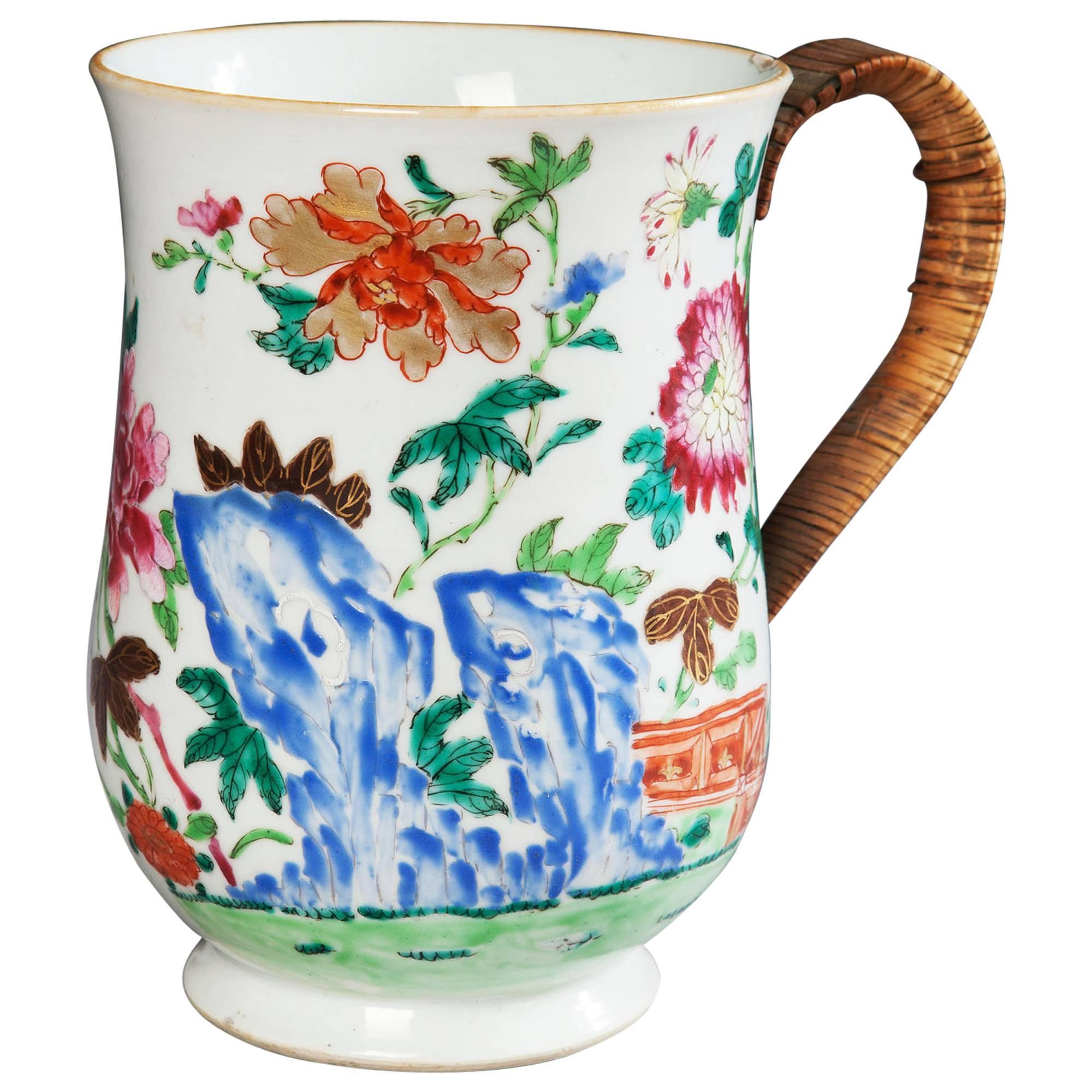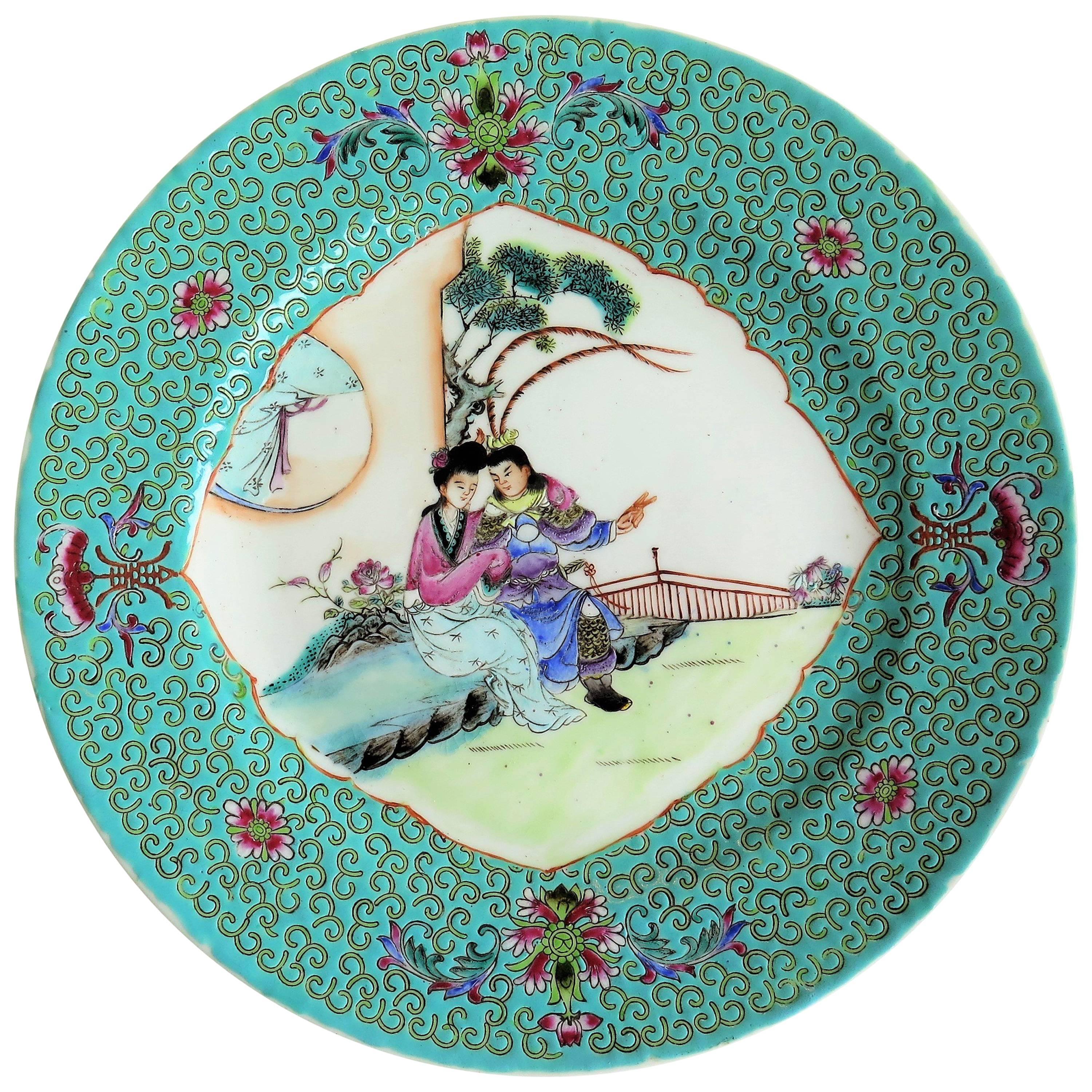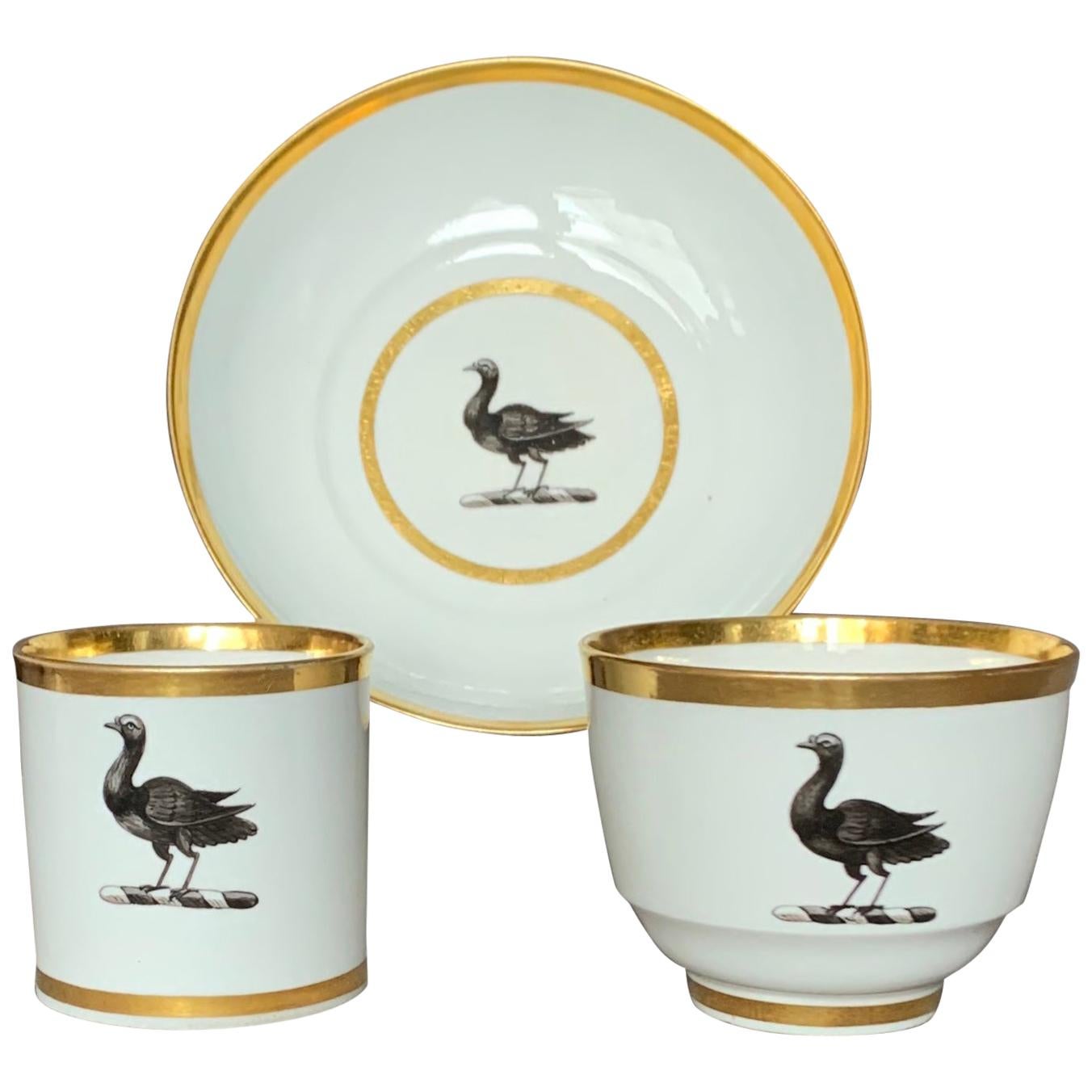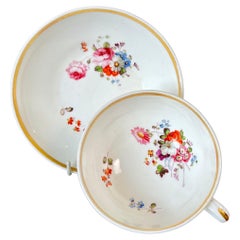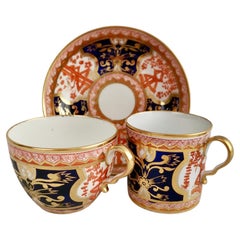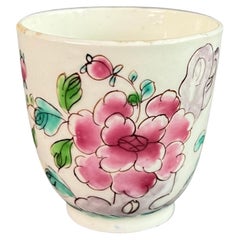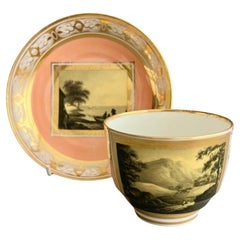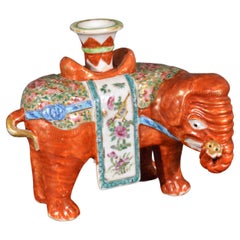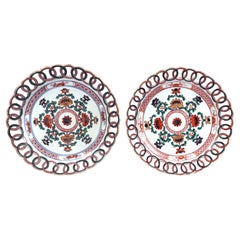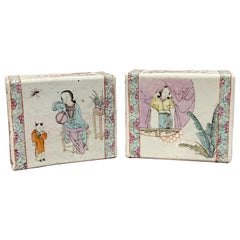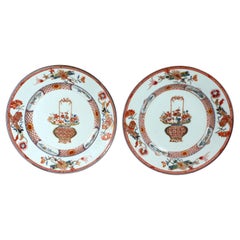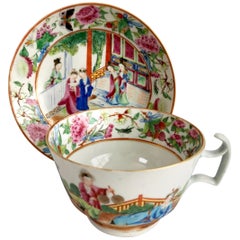
Porcelain Breakfast Teacup, Chinese Export, Canton Famille Verte Figures, '2'
View Similar Items
Want more images or videos?
Request additional images or videos from the seller
1 of 14
Porcelain Breakfast Teacup, Chinese Export, Canton Famille Verte Figures, '2'
About the Item
- Dimensions:Height: 1 in (2.54 cm)Diameter: 1 in (2.54 cm)
- Sold As:Set of 2
- Style:Chinese Export (Of the Period)
- Materials and Techniques:
- Place of Origin:
- Period:
- Date of Manufacture:circa 1880
- Condition:Wear consistent with age and use. Excellent condition without damage, repairs, crazing or wear other than some very light rubbing.
- Seller Location:London, GB
- Reference Number:Seller: LT-CP01c1stDibs: LU4805119686302
About the Seller
5.0
Gold Seller
Premium sellers maintaining a 4.3+ rating and 24-hour response times
Established in 2016
1stDibs seller since 2019
225 sales on 1stDibs
Typical response time: 2 hours
Authenticity Guarantee
In the unlikely event there’s an issue with an item’s authenticity, contact us within 1 year for a full refund. DetailsMoney-Back Guarantee
If your item is not as described, is damaged in transit, or does not arrive, contact us within 7 days for a full refund. Details24-Hour Cancellation
You have a 24-hour grace period in which to reconsider your purchase, with no questions asked.Vetted Professional Sellers
Our world-class sellers must adhere to strict standards for service and quality, maintaining the integrity of our listings.Price-Match Guarantee
If you find that a seller listed the same item for a lower price elsewhere, we’ll match it.Trusted Global Delivery
Our best-in-class carrier network provides specialized shipping options worldwide, including custom delivery.More From This Seller
View AllSamuel Alcock Porcelain Teacup, White with Flower Sprays, ca 1823
By Samuel Alcock & Co.
Located in London, GB
A teacup and saucer in the “half orange” shape, white with simple gilt rim and beautiful hand painted flower sprays
Pattern unknown but similar to 1082
Year: ca 1823
Size: cup diameter 10cm (4”), saucer diameter 14.2cm (5.5”)
Condition: excellent, some rubbing to gilt
There are several items available in this design, please see group image and ask for more info if interested.
The Samuel Alcock factory was operative in Staffordshire between 1822 and 1856, after which it was bought by Sir James Duke and Nephews. The factory started as a partnership between the young Samuel Alcock and the older Ralph Stevenson, who provided the factory and capital. Alcock quickly took the factory to great heights, building one of the biggest factories of its time. Alcock jumped on the new Rococo Revival fashion and served a huge new middle class market. The reason we now don't hear much about Samuel Alcock porcelain...
Category
Antique 1820s English Regency Tea Sets
Materials
Porcelain
Spode Porcelain Teacup Trio, Red Imari Dollar Pattern, Regency, ca 1810
By Spode
Located in London, GB
This is a beautiful orphaned teacup made by Spode in about 1810. It bears a lavish Japanese-inspired Imari pattern.
Spode was the great pioneer among the Georgian potters in England. Around the year 1800 he perfected the bone china recipe that has been used by British potters ever since, and he was also the leading potter behind the technique of transferware, making it possible for English potters to replace the Chinese export china, which had come to an end around that time, with their own designs. This was fundamental to a thriving industry that would last for about 150 years and provide half the world with their tableware. Spode porcelain is regarded as one of the highest quality porcelains around; for a soft-paste porcelain it is surprisingly hard and fine, and has a wonderful bright white colour.
The pattern on this can is called "Dollar" pattern, a very famous pattern that was used by English potters in the 18th and early 19th Century. It is obvious why it is called “dollar” - but its origin is less obvious! It is thought that this pattern was derived from a very old Chinese pattern depicting a tree with elaborate foliage that hides a Chinese character representing longevity or happiness. Traditionally, this went with a an image called “Taotie”, which was used on very ancient bronze vases...
Category
Antique Early 1800s English Regency Porcelain
Materials
Porcelain
Bow Porcelain Orphaned Coffee Cup, Famille Rose Peony, circa 1755
By Bow Porcelain
Located in London, GB
This is a very charming orphaned coffee cup made by the Bow Porcelain factory in about 1755. The cup is decorated in a Chinese "famille rose" peony pattern. This cup would have been part of a large tea service, and the tiny size shows how expensive coffee was in the 18th Century.
The Bow Porcelain Factory was one of the first potteries in Britain to make soft paste porcelain, and most probably the very first to use bone ash, which later got perfected by Josiah Spode to what is now the universally used "bone china". Bow was the main competitor of the Chelsea Porcelain Factory, but where Chelsea made very fine slipcast porcelain, Bow made a different soft paste porcelain that tended to be softer and could be pressed into moulds. Bow served a larger public generally at lower prices. The factory was only in operation between 1743 and 1774, after which the tradition got incorporated into some of the later famous potteries such as Worcester and Derby.
The cup is unmarked, which is normal for Bow items of this era.
Condition report the cup is in excellent condition without any damage or repairs. There are various glazing imperfections, which are quite normal for porcelain of this era.
Antique British porcelain...
Category
Antique 1750s English Rococo Tea Sets
Materials
Porcelain
Barr Flight & Barr Teacup, Salmon with Monochrome Sepia Landscapes, ca 1810
By Barr, Flight & Barr Worcester
Located in London, GB
On offer is a very rare teacup and saucer made by Barr Flight & Barr in about 1810. The set has a beautifully soft salmon ground colour, an elegant gilt border motif, and beautiful m...
Category
Antique 1810s English Regency Porcelain
Materials
Porcelain
$1,450 / set
Free Shipping
Minton Teacup Quartet, Bath Embossed, Green Flowers patt.38, ca 1830
By Minton
Located in London, GB
This is an elegant teacup quartet consisting of a small plate, a teacup, a coffee cup and a saucer, made by Minton in about 1830. The set is decorated with the beautifully hand paint...
Category
Antique 1830s English Rococo Revival Tea Sets
Materials
Porcelain
Minton Teacup Trio, Bath Embossed, Green Flowers Patt. 38/680, ca 1830
By Minton
Located in London, GB
This is an elegant "true trio" consisting of a teacup, coffee cup and saucer, made by Minton in about 1830. The set is decorated with the beautifully hand painted pattern no. 680 con...
Category
Antique 1830s English Rococo Revival Tea Sets
Materials
Porcelain
You May Also Like
Chinese Export Porcelain Canton Famille Rose Elephant Modeled as a Candlestick
Located in Downingtown, PA
Chinese Export porcelain canton famille rose elephant modeled as a candlestick,
Circa 1860
The standing Chinese Export porcelain elephant with its trunk up is painted in an iron-red with gilt decoration and caparisoned. On its back is a gu-form vase candle holder rising from the raised saddle. Below the urn is a long saddle cloth hanging down painted with famille rose birds...
Category
Antique Mid-19th Century Chinese Export Candlesticks
Materials
Porcelain
Kangxi Period Chinese Export Porcelain Famille Verte Openwork Dishes, a Pair
Located in Downingtown, PA
Chinese Export Famille Verte openwork dishes,
A Pair,
Kangxi,
Circa 1700
The circular Chinese Export porcelain dishes with openwork cash border...
Category
Antique Early 18th Century Chinese Chinese Export Porcelain
Materials
Porcelain
Pair of Chinese Export Famille Verte Pillows
Located in West Palm Beach, FL
Pair of Chinese Export Famille Verte pillows, Rare to find a pair, each one decorated with figures in landscape, opposing, presents...
Category
Early 20th Century Chinese Chinese Export Ceramics
Materials
Porcelain
$1,516 Sale Price / set
20% Off
Chinese Export Porcelain Famille Rose-Verte Plates Painted with A Flower Basket
Located in Downingtown, PA
Chinese Export Porcelain Famille Rose Plates Painted with Flower Baskets,
Yongzheng (1723-1735)
The pair of Chinese Export Yongzheng period "Rose-Verte" porcelain plates depict an o...
Category
Antique 1720s Chinese Chinese Export Porcelain
Materials
Porcelain
Chinese Export Famille Verte Porcelain & French Ormolu Chinoiserie Centerpiece
By Edward Holmes Baldock
Located in Los Angeles, CA
A very fine and large 19th century Chinese export famille verte porcelain and French figural ormolu-mounted Chinoiserie style centerpiece jardinière, in the manner of Edward Holmes Baldock (1777-1845). The circular-ovoid porcelain bowl or cachepot, maybe 18th century Jiaqing period (unverified), decorated with a blue and purple ground background with parcel gilt depicting pagodas, trees, mountains and landscape scenes, flanking scrolled handles issuing from the base and ending with a finely chased ormolu pierced acanthus rim. The two ends with a projected mask of Chinese Imperial lions or foo dogs, surmounted and raised on six finely chased ormolu masks of Bacchus satyrs flanked by seashell-like mounts. The Ormolu, circa Paris, 1880. The Porcelain circa 1800 (Maybe 18th century.)
Measures: Height: 15 3/4 inches (40 cm.)
Overall width: 21 inches (53.4 cm.)
Depth: 17 inches (43.2 cm.)
Edward Holmes Baldock (1777-1845) was a prominent London furniture dealer to the Royal Family, father of Edward Holmes Baldock.
He was first listed in the London trade directories in 1805. That listing had him operating out of No.7 Hanway Street in London, where he was described as selling "china and glass". An updated listing in 1821 described his business as "an antique furniture and ornamental furniture dealer", and in 1826 as a buyer and seller of "china, cabinets, screens, bronzes etc".
Between 1832 and 1837 he sold earthenware and glass products to William IV, and upon the ascendancy of Queen Victoria in 1837, sold china until his death in 1845. Baldock was one of the first antique dealers and is similar to the 18th century marchands-merciers Dominique Daguerre and Simon-Philippe.
He was the father of Edward Holmes Baldock (1812-1875), a British Conservative Party politician, and of Mary Frances Baldock, wife of the philatelist W. A. S. Westoby.
Famille Verte
Famille verte (????, Kangxi wucai...
Category
Antique 19th Century French Chinoiserie Planters, Cachepots and Jardinières
Materials
Ormolu
$28,950 Sale Price
40% Off
12 Teacups and Saucers Minton Bone China Porcelain Haddon Hall
By Minton
Located in Paris, FR
Set of 12 teacups and with their saucers in Minton Bone China Porcelain. Famous Minton Haddon Hall model designed by John William Wadsworth (1879–19...
Category
Early 20th Century English Porcelain
Materials
Porcelain
Recently Viewed
View AllMore Ways To Browse
Marble Top Rattan Coffee Table
Marc Chagall Mermaid
Marc Taggart
Marcello Boccacci
Marcello Mioni On Sale
Marco Glaviano
Marco Zanuso Table 2532
Margot Kempe
Maria Gerstman
Marianne Heske
Marilyn Lanfear
Marilyn Weinstein
Marimekko Textile Wall Hanging
Mariner Trunk
Mario Agostinelli
Mario Bellini Mirror Top Chrome Coffee Table
Mario Botta Robot
Mario Passoni
